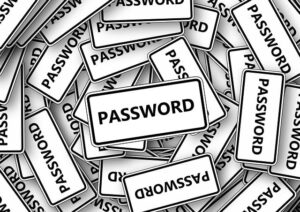
In today’s interconnected and collaborative work environment, secure file sharing has become an integral part of daily operations. Whether it’s sharing documents with team members, collaborating on projects, or exchanging files with clients and partners, the need for secure file sharing practices has never been more critical. This article explores essential best practices for secure file sharing, helping you protect your data and maintain confidentiality in a collaborative environment.
Choose a Secure File Sharing Platform
Start by selecting a reliable and secure file sharing platform that offers robust security features. Look for platforms that provide end-to-end encryption, user access controls, and data backup options. Ensure the platform adheres to industry standards and complies with data protection regulations.
Implement User Access Controls
Control who has access to your shared files by implementing user access controls. Assign permissions and privileges based on roles and responsibilities to limit unauthorized access. Regularly review and update user access permissions as team members join or leave the organization.
Use Strong Passwords

Require strong passwords for accessing shared files and folders. Encourage users to choose complex passwords that include a combination of letters, numbers, and special characters. Enforce password policies that require regular password updates to enhance security.
Enable Two-Factor Authentication (2FA)
Implement two-factor authentication (2FA) for an extra layer of security. With 2FA enabled, users must provide a second form of verification, such as a unique code sent to their mobile device, in addition to their password. This significantly reduces the risk of unauthorized access, even if passwords are compromised.
Encrypt Files and Communications
Utilize encryption technologies to secure files and communications during the sharing process. Encryption scrambles the data, making it unreadable to unauthorized individuals. Look for file sharing platforms that offer encryption features, both at rest and in transit.
Regularly Update Software and Applications
Keep your file sharing software, applications, and operating systems up to date with the latest security patches and updates. Regular updates help patch vulnerabilities and address security flaws that could be exploited by attackers.
Educate Users on Security Awareness

Raise awareness among your team members about the importance of security when sharing files. Educate them about phishing attacks, social engineering techniques, and the risks of sharing sensitive information with untrusted sources. Promote a culture of security awareness throughout your organization.
Monitor File Sharing Activities
Monitor and log file sharing activities to identify any unusual or suspicious behavior. Implement auditing and logging mechanisms that track who accesses files, when, and from which devices. Regularly review logs and investigate any anomalies promptly.
Backup Important Files
Regularly back up your important files to a separate and secure location. In case of accidental deletion, file corruption, or data loss, having reliable backups ensures you can recover your files without compromising productivity or security.
Control External Sharing
Exercise caution when sharing files with external parties. Only share sensitive information with trusted recipients using secure sharing methods. Consider implementing password protection or setting expiration dates for shared links to control access.
Stay Updated on Security Threats

Stay informed about the latest security threats and vulnerabilities related to file sharing. Subscribe to industry newsletters, follow cybersecurity blogs, and participate in relevant forums to stay updated on emerging risks and best practices.
Tips to Protect Yourself:
Here are some additional tips to help you protect yourself while sharing files:
- Regularly scan files for malware using reliable antivirus software.
Be cautious when opening email attachments or downloading files from unknown sources. - Use encrypted communication channels, such as secure email or encrypted messaging apps, for sensitive file exchanges.
- Keep your devices and software up to date with the latest security patches.
- Enable device-level encryption to secure your files even if your device gets lost or stolen.
- By following these tips and best practices, you can enhance your data security and ensure that your file sharing activities are protected from potential threats.
Conclusion
Secure file sharing is a crucial aspect of maintaining data confidentiality and integrity in a collaborative environment. By implementing these best practices, you can safeguard your data, protect sensitive information, and minimize the risk of unauthorized access or data breaches. Remember, security is an ongoing process, so regularly assess and update your file sharing practices to stay ahead of evolving threats.





This Post Has One Comment